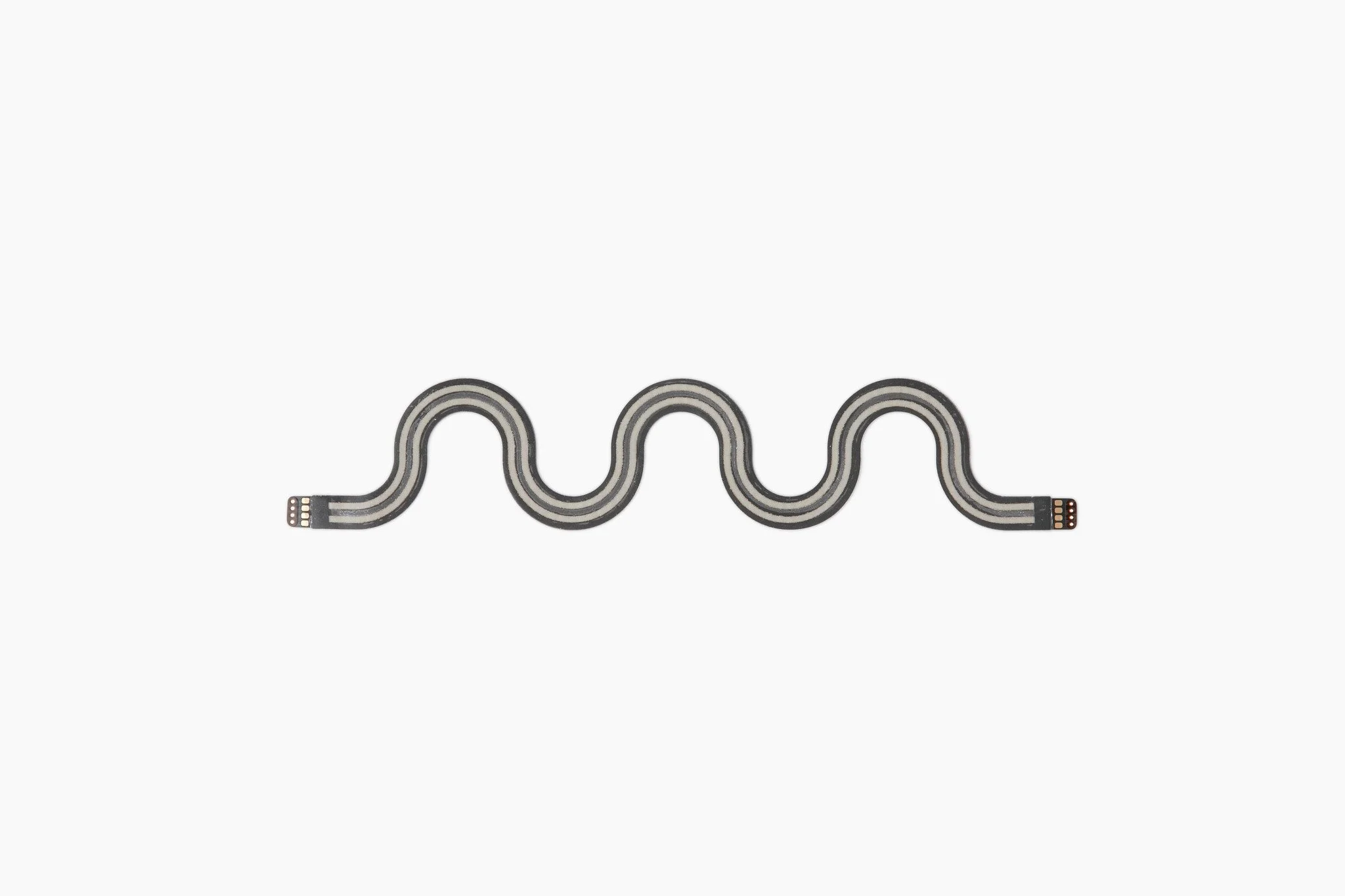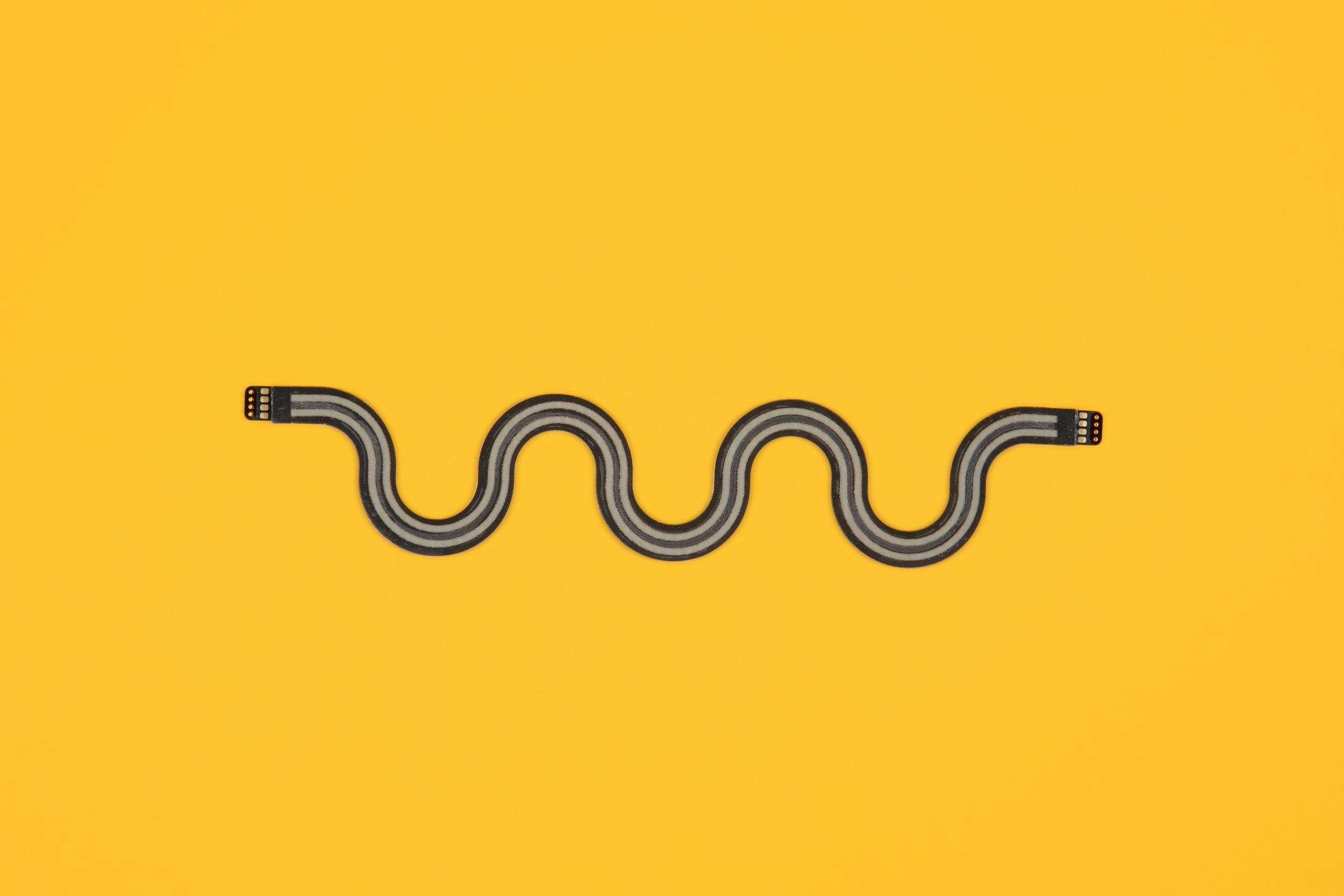What are stretchable electronics?
Stretchable electronics are electronic systems built on highly compliant (elastic or elastomeric) substrates and patterned with conductive architectures that allow the circuit to sustain significant tensile, compressive, or bending deformation while maintaining electrical functionality.
Flexible and Stretchable Electronics Application
The advanced technology behind Loomia’s LEL enables integration into wearables, medical tech, and robotics as it can turn electronics from a rigid board into a “skin” or layer that wrinkles, stretches, and moves with the host material.
Loomia’s Stretchable Electronic Technology
Loomia’s LEL technology uses a mesh conductor laminated to a soft substrate (e.g., TPU) so that when the substrate deforms, the conductor geometry (the mesh loops, serpentine shapes) accommodates the motion without excessive strain on the metal traces. Because the conductor is ultrafine and follows a serpentine pattern, it can maintain low resistance and stable performance even during stretching or draping across fabrics or curved surfaces.
Loomia’s LEL Technology in the Stretchable Electronics Market
The stretchable electronics market is filled with promising concepts, but few systems are industrially robust, high-performance, and manufacturable at scale. Loomia’s LEL technology fills that gap.
Unlike printed or liquid-metal circuits that often fail under strain, the LEL uses a unique mesh conductor on a soft, heat-bondable substrate, creating circuits that can be stretched, bent, and draped. With its manufacturing capabilities, Loomia bridges the space between flexible R&D prototypes and production-ready electronic layers that withstand mechanical stress and connect seamlessly to traditional electronics.
Frequently Asked Questions
-
Stretchable electronics are circuits built on soft, elastic materials and patterned with flexible geometries—such as Loomia’s ultrafine serpentine and mesh conductors—that allow them to bend, twist, and stretch while maintaining full electrical functionality.
-
Unlike printed or liquid-metal circuits, Loomia’s Ultrafine Serpentine Bus uses a multi-metal mesh conductor on a soft, heat-bondable substrate. This geometry-driven design maintains stable performance even under motion, strain, or tight layouts.
-
Description text goes here
-
The Ultrafine Serpentine Bus is ideal for wearables, medical devices, robotics, and automotive interiors, where flexible, compact, and durable electronic interconnects are required.
-
Yes. The LEL architecture is designed for seamless connection to rigid components and standard connectors, bridging soft, flexible layers with conventional electronic systems.
-
Loomia’s circuits feature a unique mesh conductor laminated onto soft, thermoplastic polyurethane (TPU) or similar elastomeric substrates that provide both flexibility and durability.






